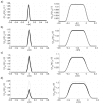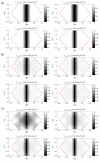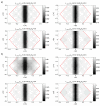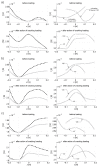The Use of Dijkstra's Algorithm in Assessing the Correctness of Imaging Brittle Damage in Concrete Beams by Means of Ultrasonic Transmission Tomography
- PMID: 31979333
- PMCID: PMC7040618
- DOI: 10.3390/ma13030551
The Use of Dijkstra's Algorithm in Assessing the Correctness of Imaging Brittle Damage in Concrete Beams by Means of Ultrasonic Transmission Tomography
Abstract
The accuracy of transmission ultrasonic tomography for the detection of brittle damage in concrete beams can be effectively supported by the graph theory and, in particular, by Dijkstra's algorithm. It allows determining real paths of the fastest ultrasonic wave propagation in concrete containing localized elastically degraded zones at any stage of their evolution. This work confronts this type of approach with results that can be obtained from non-local isotropic damage mechanics. On this basis, the authors developed a method of reducing errors in tomographic reconstruction of longitudinal wave velocity maps which are caused by using the simplifying assumptions of straightness of the fastest wave propagation paths. The method is based on the appropriate elongation of measured propagation times of the wave transmitted between opposite sending-receiving transducers if the actual propagation paths deviate from straight lines. Thanks to this, the mathematical apparatus used typically in the tomography, in which the straightness of the fastest paths is assumed, can be still used. The work considers also the aspect of using fictitious wave sending-receiving points in ultrasonic tomography for which wave propagation times are calculated by interpolation of measured ones. The considerations are supported by experimental research conducted on laboratory reinforced concrete (RC) beams in the test of three-point bending and a prefabricated damaged RC beam.
Keywords: concrete; damage mechanics; damage parameter; elastic degradation; experimental research; graph theory; internal length; non-destructive testing; ultrasonic tomography.
Conflict of interest statement
The authors declare no conflict of interest.
Figures



























References
-
- Drobiec Ł., Jasiński R., Piekarczyk A. Diagnostyka Konstrukcji Żelbetowych. PWN; Warsaw, Poland: 2010. (In Polish)
-
- Jacobs F. Durability of concrete in structural members. Beton-und Stahlbetonbau. 2019;114:383–391. doi: 10.1002/best.201900003. - DOI
-
- Breysse D., Balayssac J.P., Biondi S., Corbett D., Goncalves A., Grantham M., Luprano V.A.M., Masi A., Monteiro A.V., Sbartai Z.M. Recommendation of RILEM TC249-ISC on non destructive in situ strength assessment of concrete. Mater. Struct. 2019;52:71. doi: 10.1617/s11527-019-1369-2. - DOI
-
- Bai Y., Basheer M., Cleland D., Long A. State-of-the-art applications of the pull-off test in civil engineering. Int. J. Struct. Eng. 2009;1:93–103. doi: 10.1504/IJSTRUCTE.2009.030028. - DOI
-
- Dillon R., Rankin G.I.B. Cube, cylinder, core and pull-off strength relationships. Proc. Inst. Civ. Eng. Struct. Build. 2013;166:521–536. doi: 10.1680/stbu.11.00075. - DOI
LinkOut - more resources
Full Text Sources

